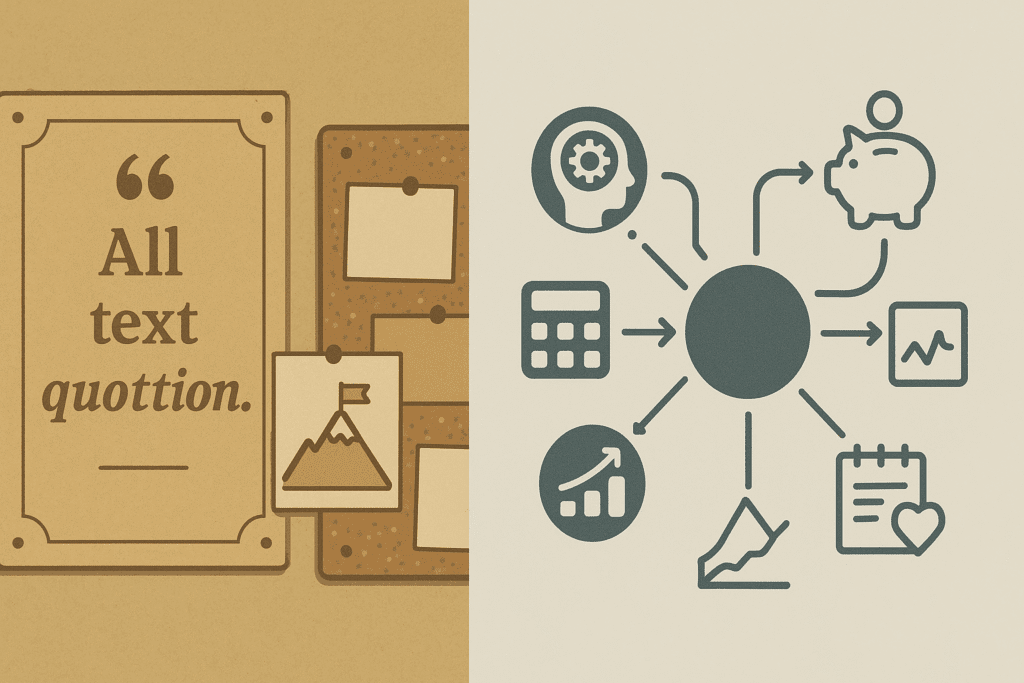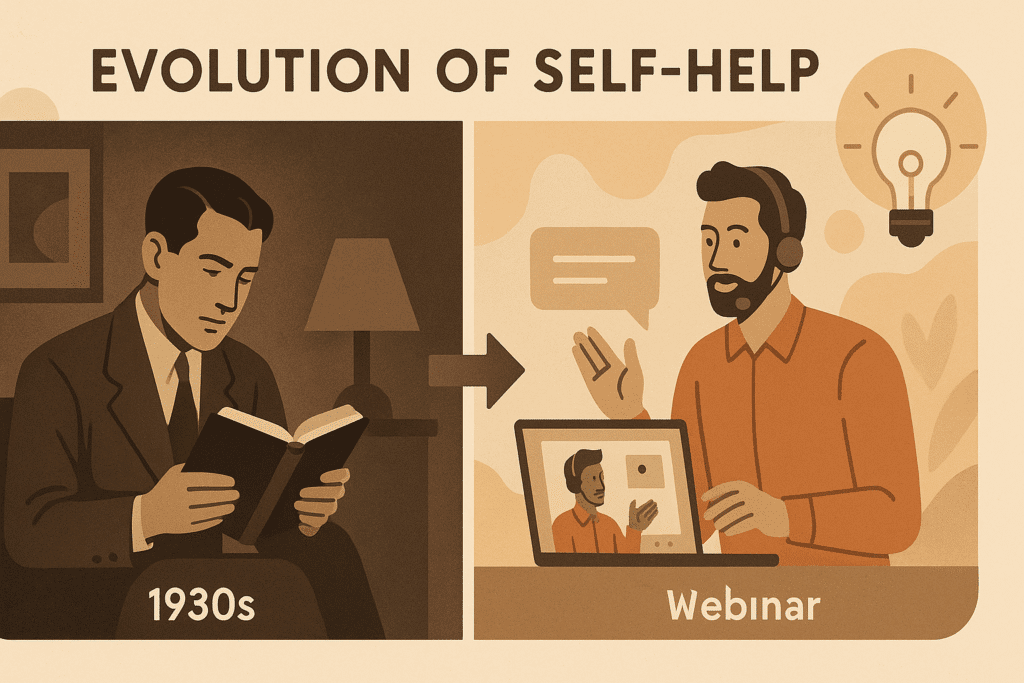Introduction

Napoleon Hill’s Think and Grow Rich has become one of the most influential self-help books in history. First published in 1937, it promises that success can be achieved by mastering one’s thoughts, developing burning desire, and maintaining unwavering belief. Over 100 million copies have been sold, and the book continues to be recommended by entrepreneurs, motivational speakers, and influencers worldwide. But there’s one uncomfortable detail often left out of the conversation: Napoleon Hill himself never became rich. In fact, his life was marked by business failures, unpaid debts, and serious allegations that cast doubt on the very principles he promoted.
This contradiction raises a bigger question—can advice about wealth and success be trusted if the person giving it didn’t achieve those things themselves? Hill claimed to have interviewed hundreds of successful people under the guidance of Andrew Carnegie, yet no credible records support that claim. Despite his shaky personal history, his book remains a bestseller and a source of inspiration. This article explores the gap between Hill’s real-life struggles and the promises of his writing—and whether Think and Grow Rich is a timeless philosophy, or just a powerful myth that people want to believe.
Myth vs. Reality: Can You Trust Napoleon Hill’s Wealth Advice?
There’s a striking gap between the success Napoleon Hill promised in Think and Grow Rich and the reality of his own life. While the book presents itself as a roadmap to financial abundance, Hill himself never achieved lasting wealth through the principles he taught. Instead, his life was marked by financial struggle, questionable claims, and a legacy built more on persuasion than proven results.
▸ He wasn’t wealthy when he wrote the book
Despite claiming to have unlocked the formula for riches, Hill lived in near poverty for much of his life. He filed for bankruptcy more than once and saw many of his ventures fail. At the time Think and Grow Rich was published in 1937, Hill had not achieved the financial success he wrote about—raising doubts about whether he ever applied his own teachings successfully.
▸ His wealth came from marketing the dream, not living it
Hill didn’t become rich first and then share his methods—he became rich by promoting those methods. The book’s popularity led to income through publishing deals, speaking engagements, and licensing his “philosophy of success.” Essentially, he built a business around teaching wealth, rather than demonstrating it through real-world results.
▸ The Carnegie story is likely a myth
A cornerstone of Hill’s credibility rests on his claim that Andrew Carnegie personally commissioned him to interview 500 successful men over 20 years. However, this story has never been verified. Carnegie’s official biographer, David Nasaw, found no record of any meeting between Hill and Carnegie, and no written documentation supporting the commission ever surfaced.
▸ He had a history of legal troubles and alleged fraud
Hill’s personal background includes a pattern of lawsuits, unpaid debts, and serious accusations. He was reportedly involved in altering checks, running questionable business schemes, and selling unlicensed securities. These incidents severely damaged his reputation and call into question the integrity of his teachings.
▸ His influence came more from confidence than evidence
Hill was a talented writer and speaker, and he knew how to present ideas with authority. His style created the impression of expertise—even when the facts were thin. As Inc. Magazine notes, readers often place trust in an author simply because they’ve published a book, regardless of whether their credentials hold up under scrutiny.
Hill’s Ideas vs. Modern Financial Psychology: A Clash of Eras

Napoleon Hill’s Think and Grow Rich emerged during a time of unshakable optimism—an era when American industry was booming, self-made millionaires were idolized, and personal success was framed as a matter of character. In that context, Hill’s belief that mindset alone could shape financial destiny felt revolutionary. But today’s understanding of money and human behavior has shifted dramatically. Modern financial psychology, grounded in behavioral science, offers a more nuanced and evidence-based view—one that often clashes with Hill’s more idealistic philosophy.
Let’s explore how these two worldviews differ:
1. Mindset vs. Behavioral Finance
- Hill built his philosophy on the idea that thoughts create reality—that unwavering desire, faith, and self-suggestion could attract wealth.
- In contrast, behavioral finance highlights how individuals often act irrationally with money, influenced by psychological biases like loss aversion, overconfidence, and herd mentality.
- Today’s approach focuses not on mental repetition, but on identifying and correcting cognitive distortions, especially under pressure or uncertainty.
2. Wealth as Virtue vs. Wealth as Behavior
- Hill often portrayed wealth as a moral reward—suggesting that success comes to those who think correctly, while failure implies mental weakness.
- Modern psychology rejects this moral lens. It sees wealth as a result of behavioral patterns, upbringing, and emotional self-regulation, rather than character alone.
- Financial well-being today is measured not just by how much you accumulate, but by how effectively you manage spending, plan for the future, and maintain peace of mind.
3. Magical Thinking vs. Evidence-Based Strategy
- A central theme in Hill’s work is the Law of Attraction—the idea that visualizing success will help materialize it.
- Today, psychologists caution against this type of magical thinking, warning that it can create false hope or risky behavior.
- Instead, tools like goal framing, mental accounting, and behavioral nudges are used to help people make smarter, more consistent financial decisions based on real-world behavior—not just intention.
4. Self-Blame vs. Self-Compassion
- These methods help individuals work through money scripts, financial trauma, and subconscious beliefs about money, acknowledging that setbacks are part of the journey—not proof of personal failure.
- Hill’s teachings imply that if success doesn’t arrive, it’s because you didn’t desire it hard enough—leading to self-blame when things go wrong.
- Modern financial therapy and coaching take a very different approach, emphasizing self-compassion and emotional awareness.
How Think and Grow Rich Shaped the Self-Help Industry
Napoleon Hill didn’t just publish a bestselling book—he laid the foundation for what would become the multi-billion-dollar self-help industry. Think and Grow Rich is widely seen as the genre’s blueprint, influencing everything from motivational speaking and personal development coaching to online entrepreneurship and spiritual manifesting culture. Its impact is as cultural as it is commercial, setting the tone for how personal growth is marketed and consumed to this day.
1. The “Success Formula” Becomes a Template
Hill’s signature 13-step approach gave rise to what is now a standard formula in self-help media. Authors and speakers across generations—from Tony Robbins to Rhonda Byrne—have borrowed from his structure:
- Numbered lists of “universal” principles
- Personal stories and celebrity anecdotes
- A central promise: mindset can transform your life
This formula has become embedded in everything from bestselling books to TED Talks and productivity podcasts. Hill essentially created a framework that many continue to recycle, often with only minor tweaks.
2. The Rise of Gurus and Coaching Culture
Hill’s confident tone and sweeping claims helped shape the archetype of the modern “guru”—a charismatic expert who sells personal transformation. His legacy includes:
- Mindset coaches who claim to unlock wealth or happiness through belief
- Manifestation influencers echoing Hill’s Law of Attraction concepts
- Seminar businesses built around affirmations, success rituals, and group coaching
As noted by Elite Leadership Books, Hill’s influence can be seen in the rise of mastermind groups, affirmation-based goal setting, and success coaching models that dominate the industry today.
3. Hope Becomes a Scalable Product
Published during the Great Depression, Think and Grow Rich offered something people desperately needed: hope. Hill showed that hope—especially during hard times—could be packaged and sold. That business model is now core to self-help:
- Books, courses, and programs promise everything from financial freedom to emotional clarity and spiritual breakthroughs.
- Testimonials and dramatic transformation stories are used to build credibility—even when the methods themselves lack scientific grounding.
As Let’s Read India explains, the book remains influential because it is emotionally accessible and endlessly adaptable—regardless of whether its claims are verifiable.
4. Mindset as a Monetized Identity
Perhaps Hill’s most lasting legacy is the idea that mindset itself is a product. Where older models of self-help focused on discipline, skill-building, or business strategy, Hill shifted the focus toward inner belief systems and mental alignment. This paved the way for:
- Abundance training programs
- Vibrational energy workshops
- Mindset reprogramming and “inner work” coaching
This evolution has empowered many, but it has also opened the door to exploitation. When belief becomes a commodity, failure is often blamed on the individual’s lack of faith—rather than the system, strategy, or advice being flawed.
Timeline: From Hill’s Ideas to Today’s Coaching Culture

Napoleon Hill’s Think and Grow Rich didn’t just inspire readers—it helped plant the psychological and structural seeds of what would grow into today’s multibillion-dollar coaching industry. His belief that mindset shapes success became the foundation for decades of personal development philosophies, coaching frameworks, and performance psychology.
Here’s how Hill’s influence evolved into the modern coaching ecosystem:
1940s–1960s: The Seeds of Personal Development
- Hill’s book introduces the idea that thoughts and beliefs shape outcomes, giving rise to a new kind of self-help thinking.
- In parallel, humanistic psychologists like Carl Rogers and Abraham Maslow popularize ideas such as self-actualization, inner potential, and growth-focused therapy—concepts that align closely with Hill’s message of mental transformation.
- The personal development movement begins to take shape, blending Hill’s motivational optimism with psychological theory.
1970s–1980s: Coaching Emerges as a Profession
- In 1974, Timothy Gallwey’s The Inner Game of Tennis reframes performance as an “inner game,” emphasizing mindset, focus, and self-awareness—hallmarks of Hill’s philosophy.
- During this time, coaching begins to shift from mentorship to a structured practice centered on individual transformation.
- By the early 1990s, Thomas Leonard, a former financial planner, launches Coach University, bringing a formal structure to life coaching. Leonard openly cites Hill’s ideas as a major influence in developing his coaching model.
1990s–2000s: Coaching Goes Corporate
- Coaching rapidly expands into the corporate world, as companies look to boost employee performance, executive leadership, and goal clarity.
- Models like GROW (Goal, Reality, Options, Will)—pioneered by Sir John Whitmore—translate mindset-based principles into actionable frameworks, echoing Hill’s belief in clarity, intention, and focused action.
- Professional organizations such as the International Coach Federation (ICF) and European Mentoring & Coaching Council (EMCC) form, helping to define coaching ethics, training standards, and certification pathways—a move away from purely motivational content.
2010s–Present: Coaching Goes Digital—and Global
Hill’s legacy today is a double-edged sword: it continues to empower millions—but also enables industries that sometimes blur the line between inspiration and illusion.
With the rise of social media, mobile apps, and online platforms, coaching becomes highly accessible and easily monetized. Coaches now reach global audiences with digital courses, webinars, and subscription models.
Terms like “mindset coach,” “abundance mentor,” and “manifestation guide” dominate the online space—modern expressions of Hill’s belief-driven success philosophy.
At the same time, growing demand for transformation opens the door to unregulated practices, with critics pointing to coaching scams, toxic positivity, and oversimplified advice.
Conclusion: The Illusion of Wealth and the Power of Narrative
Napoleon Hill’s Think and Grow Rich has endured for nearly a century—not because its author embodied the wealth he preached, but because the message taps into something deeply human. It offers a seductive promise: that success is within reach for anyone willing to believe hard enough, visualize vividly enough, and desire deeply enough. But Hill’s own life—marked by unstable finances, unverifiable claims, and a trail of legal issues—tells a more complicated story.
He didn’t achieve wealth through the principles in his book. He achieved it by selling those principles to others.
And that’s the critical insight: Think and Grow Rich isn’t just a success manual—it’s a case study in the psychology of persuasion. Hill pioneered a formula that transformed belief into a business model, laying the foundation for an entire industry built on mindset, motivation, and aspirational storytelling. While his ideas continue to inspire, their power lies more in emotional appeal than in practical evidence.
Real success isn’t rooted in magical thinking—it’s grounded in clarity, context, and compassion.
It’s not just about manifesting wealth—it’s about defining what wealth actually means in your life.
So if you choose to read Hill’s work, do it with curiosity—but also with critical thinking. Question the narrative. Examine the assumptions. And above all, remember: the most valuable thing you can grow isn’t just your bank account—it’s your ability to think clearly, act with intention, and live on your own terms.
❓ FAQ: When Does Atomic Habits Work—and When Doesn’t It?
James Clear’s Atomic Habits is widely praised for its practical strategies and clear framework for building better habits. But like any tool, it works best under certain conditions—and can fall short in others. Here’s a closer look at when it truly helps, and when it might miss the mark.
Does Atomic Habits work for everyone?
Not always. It works best for people with stable routines and environments. It’s less effective for those facing trauma, stress, or chaotic life conditions.
Is the “1% better every day” rule realistic?
Not really. Growth isn’t linear—progress often includes setbacks, plateaus, and emotional ups and downs.
Are identity-based habits always helpful?
They can help with consistency but may backfire if you tie self-worth to performance or feel shame when habits break.
What if I can’t stick to my habits?
You’re not broken. Life, emotions, and external stressors can interrupt habits. What you need is flexibility—not guilt.
Should I stop using habit trackers and systems?
No, but use them mindfully. If tracking causes stress or obsession, simplify or take a break. Tools should help—not punish.
